Essential Guide to Creating and Selling NFTs for Free in 2022
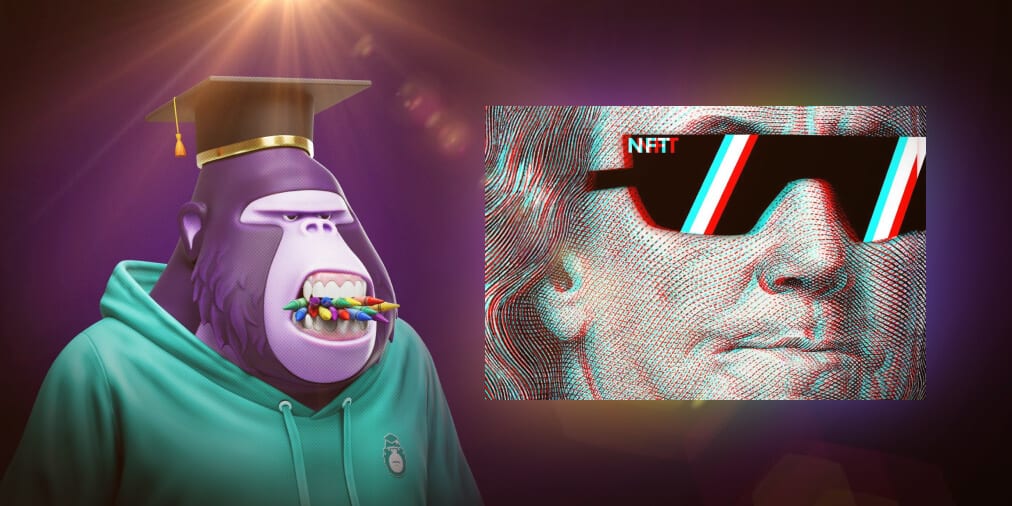
Table of contents
Non-fungible tokens, known as NFTs, have revolutionized the art scene. They've provided artists like Pak and Beeple with unprecedented fame and financial success, with their most remarkable pieces fetching prices of $91.8 million and $69.3 million, respectively.
The NFT market continues to expand at an impressive pace, with projections indicating it could grow by an astonishing USD 147.24 billion by 2026. According to reports, this sector is experiencing an annual increase of 35.27%. As the metaverse progresses, NFTs are increasingly accessible, allowing individuals to display them in digital galleries and enjoy them from the comfort of home. This rapid evolution opens up exciting avenues for anyone eager to create their own tokens. research Beyond just creation, launching an NFT comes with remarkable advantages. It grants ownership over digital creations, contrasting starkly with platforms like Spotify or Netflix, where users don't truly possess the content. Instead, individuals can acquire digital artworks on NFT marketplaces and hold proof of ownership. This becomes a fantastic way for fans to express their admiration for artists. For creators, another perk is that they can monitor their artworks' ownership trail and earn a commission from each subsequent sale, effectively allowing them to benefit from their work even after an initial sale. Therefore, even if a piece doesn’t sell for millions right away but appreciates significantly over time, the artist won’t miss out on potential earnings.
Given the rising market and the staggering art sales recorded thus far, it makes perfect sense that artists or those with innovative concepts for new tokens are curious about how to generate an NFT. Fortunately, the process is pretty straightforward and, importantly, typically doesn’t require any upfront financial investment from the artist. Essentially, all that’s needed is your artwork and a smartphone to start the minting process.
If you're eager to dive into the world of NFTs and see what minting is all about, follow this practical step-by-step guide on how to create an NFT.
First off, let’s clarify: What exactly is an NFT?
Step 1: Create a Piece of Art
Non-fungible tokens (NFTs) are unique cryptographic assets on a blockchain that come with specific identification codes and metadata that set them apart from one another.
According to Investopedia While they share a blockchain foundation with cryptocurrencies, NFTs diverge significantly; unlike cryptocurrencies that are fungible and can be exchanged equivalently, NFTs are one-of-a-kind and cannot be used as a direct substitute for money in transactions.
Nearly any digital file can be transformed into an NFT. This medium offers incredible versatility; whether it’s an image, video, or audio clip, almost any form of digital creation can be minted. Even tangible items have their own NFTs, showcasing the wide array of possibilities.
Depending on your artistic style or medium, you might choose to create a drawing, a photograph, a musical piece, or even an entire video. If you're searching for free design tools to aid your NFT efforts, there are several options available. Dolce and Gabbana couture or Nike shoes.
Some artists employ programming to generate their creations, resulting in impressive projects like CryptoPunks and Bored Ape Yacht Club. Alternatively, if you're envisioning something out of the ordinary, consider innovative endeavors such as John Gerrard’s art series, including his latest collection themed around Petro National. Canva , Adobe Express , or Krita .
There is also programmable or generative art: Once your artwork or collection is ready to reveal to the public, it's time to proceed to the second step.
Creating and selling an NFT necessitates having a digital wallet. Some of the top crypto wallets favored by users are available for you to choose from; setting one up is a breeze, akin to signing up for any online service. Simply download the app on your phone and follow the registration prompts.
Step 2: Get a Crypto Wallet
If you decide against free NFT minting options and choose to explore paid alternatives, you'll also need to acquire some cryptocurrency, such as ether. However, don't worry; there are plenty of cost-free minting methods available that won't require investment. Coinbase , MetaMask , and Trust Wallet With numerous marketplaces to consider, take a moment to reflect on what features matter most to you when selecting one. Factors to weigh include the blockchains each marketplace supports, costs involved, environmental impact, and overall market reach. Prioritize what’s essential to you as you make your decision.
While some marketplaces might charge minting fees, opting for paid options isn't mandatory. If you're working on a tight budget, consider platforms like OpenSea or Rarible, which offer free minting. Think about whether you prefer a large marketplace—where more users might notice your art but it risks getting lost among numerous offerings—or a smaller, niche platform that caters specifically to your artistic style while potentially reaching a targeted audience.
Step 3: Pick a Platform to Sell On
If environmental issues surrounding cryptocurrency are a concern for you, there are several alternative, eco-friendlier solutions compared to Ethereum, which is often criticized for its heavy carbon emissions. Marketplaces based on the Solana blockchain, such as Solsea or Magic Eden, are recognized for their commitment to sustainability; in fact, Solana achieved a carbon-neutral status last year through effective carbon offset strategies. We’ll also delve deeper into available marketplaces that offer no-cost minting as we proceed.
Once you’ve made a selection regarding your platform, go ahead and establish your account while linking your crypto wallet. Setting up an account is quite straightforward—just input a username and bio similar to registering on any social network. Once your wallet connection is established, you’ll be poised to mint your initial token.
Although many use the term blockchain frequently, it’s essential to clarify what blockchain actually entails. negative ecological impact According to Investopedia, a blockchain is \"a distributed database shared across the nodes of a computer network. As a database, it stores data electronically in a digital format.\" Most often, it is linked with cryptocurrencies and NFTs. announced We've touched on the importance of selecting the right blockchain for minting your NFTs. While there are various options, Ethereum continues to be the most favored, although it has its disadvantages, such as relatively high minting fees referred to as 'gas' fees and its significant carbon footprint. here .
This doesn't mean Ethereum is the only option; many marketplaces support multiple blockchain alternatives. For instance, Opensea operates across three blockchains: Ethereum, Polygon, and Klatyn, while Rarible works on Ethereum, Flow, and Tezos.
Step 4: Pick a Blockchain
If going green aligns with your values, consider exploring eco-friendly alternatives. Blockchains such as Flow, Tezos, and Polygon are regarded as more sustainable, while Solana boasts a carbon-neutral status.
Minting an NFT is the process of publishing it on the blockchain so it becomes available for purchase.
After selecting both your marketplace and preferred blockchain, it's time to mint your NFT.
Create an account on your chosen marketplace and connect your crypto wallet to facilitate payments. Be sure to fill out your bio to give potential buyers insight into your background as an artist.
Timing can play a crucial role in the minting process, especially regarding costs. The price for minting, indexed as gas fees, can fluctuate depending on the time of day you upload your digital file. For better rates, consider minting early in the morning or late at night. Even if you choose a free minting route, these fees will still exist, and are passed onto buyers, so factor them into your token pricing strategy. Keeping fees low can potentially maximize your profit margin.
Step 5: Mint Your NFT
Now that your account is set up, it’s game time! Click ‘Create an NFT’ and select the appropriate file. Set your price, decide how many tokens to mint (whether it’s a one-off piece or a full collection), and fill in the title and description of your artwork. If you're creating multiple NFTs, be sure to include the collection’s overview as well.
Next, choose the blockchain for uploading your file.
Decide if you want to set an auction or list your NFT at a fixed price. Here are your three options:
Fixed price – a set amount for your NFT with a defined selling period. This acts as a straightforward ‘buy now’ option.
Timed auction – establish a minimum price (reserve price) for your NFT, with the highest bidder acquiring the token.
Open to bids – you skip setting a price and allow buyers to propose offers for your NFTs. This is often a strategy used for reselling.
After hitting the 'create' button, your journey doesn't just end there. Many new artists might assume minting is all that’s needed, but a considerable aspect involves marketing your artwork once you’ve launched. Now it’s time to actively seek buyers for your token, rather than leaving your chances to fate—a strategy that’s certainly not wise when venturing into the world of art.
- A Comprehensive Guide on Creating and Selling Free NFTs in 2022 | Metaverse Post
- Contents: Step 1: Craft Your Artwork Step 2: Set Up a Cryptocurrency Wallet Step 3: Select a Sales Platform Step 4: Choose Your Blockchain Step 5: Mint Your NFT
- Crafting and Selling Free NFTs: An Essential Guide for 2022
Step 6: Sell an NFT
FTC's Attempt to Block Microsoft-Activision Merger Denied
Published on June 29, 2022, at 5:42 PM | Updated on October 10, 2022, at 6:41 AM
To enhance your experience in your native language, we sometimes utilize an automatic translation tool. Please understand that this can lead to inaccuracies, so it's best to double-check. NFT Calendar Popular NFT Marketplaces Where You Can Sell Your Creations
Non-fungible tokens, often referred to as NFTs, have revolutionized the art scene. They've opened up new avenues for fame and fortune for creators such as Pak and Beeple, whose artworks fetched staggering prices of $91.8 million and $69.3 million, respectively.
The NFT industry is on an upward trajectory, with projections suggesting a market expansion of USD 147.24 billion by 2026—an impressive annual growth rate of 35.27%. As the metaverse evolves, these tokens are becoming increasingly accessible, allowing them to be displayed in virtual galleries, thus making art viewing more convenient. This rapid progression creates tremendous opportunities for anyone looking to craft their own tokens.
Creating an NFT comes with several unique advantages. It empowers individuals with verifiable ownership over their digital creations. Unlike services such as Spotify or Netflix, where users don't possess the content, individuals can purchase digital art on NFT platforms and possess proof of ownership. This not only allows fans to express their admiration for the artist, but it also benefits the creators, as they can monitor the ownership changes of their work and earn a percentage from subsequent sales. Hence, even if an artwork doesn't sell for a fortune initially but appreciates in value later, the artist still benefits financially.
With the booming market and noteworthy art sales registered so far, it's understandable for any artist or aspiring creator to ponder how to create an NFT. The process is straightforward and typically doesn’t require upfront costs from the creator. Primarily, all you need is your artwork and a smartphone to mint your unique token.
If you're eager to dive into the NFT scene and want to learn how to mint your own tokens, here’s a detailed step-by-step guide.
Opensea
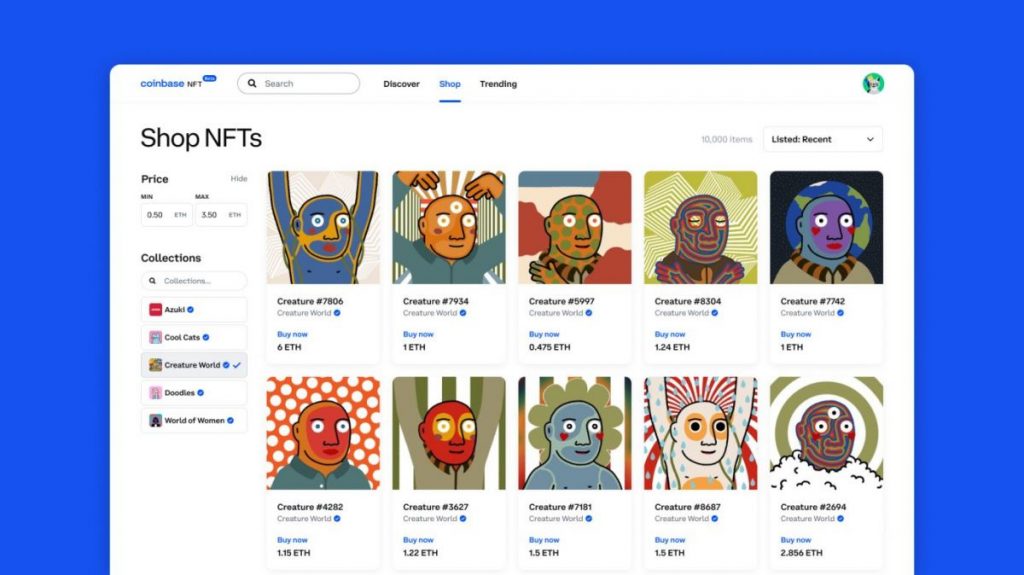
NFTs, or non-fungible tokens, are unique cryptographic assets recorded on a blockchain, possessing distinct identification codes and metadata that sets them apart from one another.
While they share similarities with cryptocurrencies because they also reside on a blockchain, NFTs are non-fungible tokens that are incomparable to one another. Unlike cryptocurrencies, which can be exchanged at equal value, each NFT is unique and cannot serve as a substitute for currency in transactions.
Binance NFT
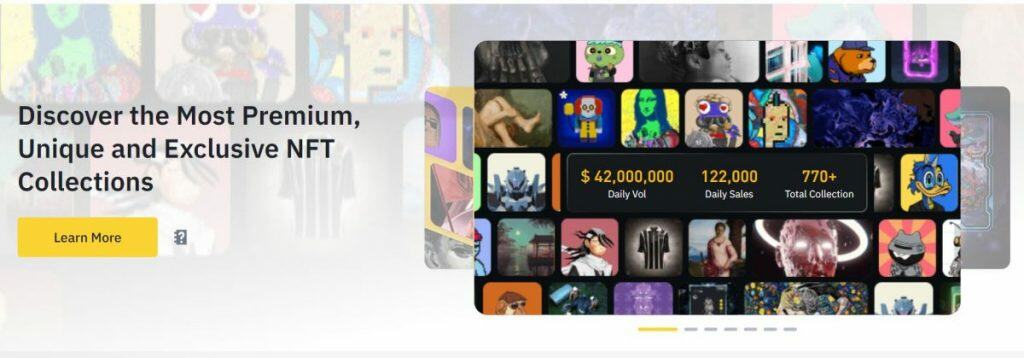
As an artist, you have the flexibility to turn your drawings, photographs, music tracks, or videos into NFTs. If you lack design software for your NFT project, consider exploring free tools available online. quick fiat cash outs Some artists leverage programming to produce their works, as seen in projects like CryptoPunks and Bored Ape Yacht Club. Alternatively, if you're considering a different approach, check out John Gerrard’s innovative works, such as his latest Petro National collection.
Once your artwork or collection is ready for the audience, it's time to move to the next phase. gaming NFTs To mint and sell your NFT, securing a digital wallet is essential. Leading crypto wallets include options like MetaMask and Coinbase; take your pick. Setting up a crypto wallet is a hassle-free process, akin to signing up for any online service. You can easily download an app to your smartphone and create an account.
Crypto.com NFT Marketplace
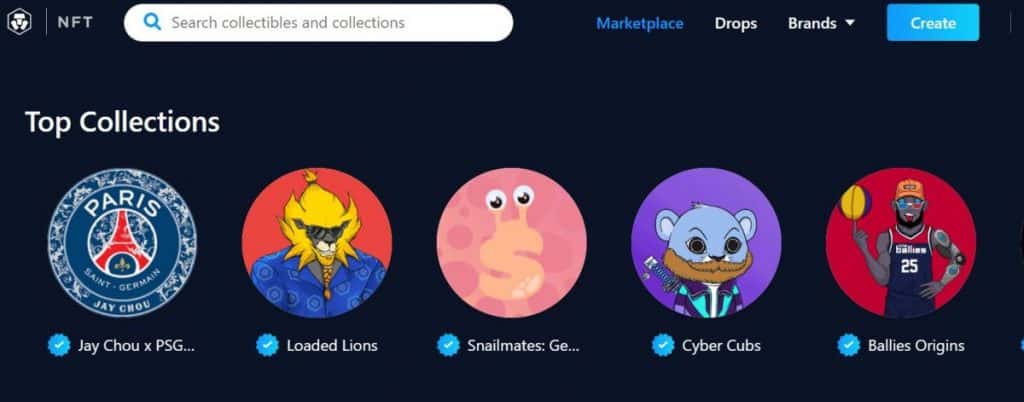
There are various marketplaces to choose from, so consider your preferences when making your selection. Factors like available blockchains, fees, environmental impacts, and the size of the marketplace should all weigh into your decision.
While certain marketplaces might require minting fees for your NFTs, this is not a must. If you have a tight budget, platforms like OpenSea or Rarible offer free minting options. Additionally, think about whether you prefer a larger site with a broader audience or a more niche one that focuses on specialized content.
Coinbase NFT

If the environmental concerns of cryptocurrency, particularly the well-known carbon footprint, are a dealbreaker for you, there are eco-friendlier alternatives to the carbon-heavy Ethereum blockchain. Marketplaces based on Solana, such as Solsea and Magic Eden, are recognized for their environmentally conscious practices; Solana even achieved carbon neutrality last year through carbon offsets. Below, we will delve further into platforms that offer free minting, but you can also review our overview of NFT marketplaces. beta stage Once you’ve selected your preferred platform, it's time to create an account and connect your crypto wallet. Again, the account setup process is quite user-friendly—just provide your username and a brief bio, similar to signing up on any other social media. Once your wallet is linked, you're set to mint your first NFT.
AsyncArt

Although the term blockchain is frequently mentioned, let’s clarify what it actually entails.
According to Investopedia, a blockchain is described as 'a distributed database that is shared across the nodes of a computer network, storing information electronically in a digital format.' This technology is most commonly associated with cryptocurrencies and NFTs. introduced We've touched on the significance of choosing the right blockchain for your NFT minting journey. A plethora of options is available; however, the Ethereum network remains the most widely used. Despite its popularity, it does come with challenges, such as relatively high minting fees (often termed 'gas' fees) and a significant carbon footprint.
Rarible
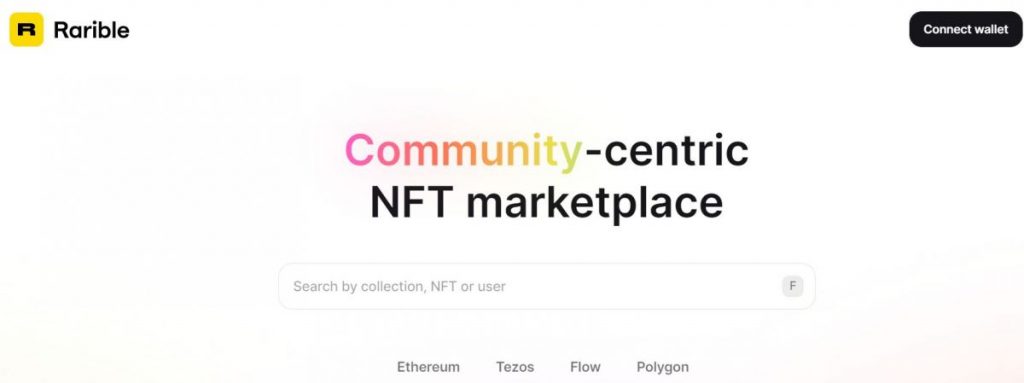
With Ethereum being so prevalent, you might want to consider alternative blockchains. Fortunately, many marketplaces support multiple blockchain options. For example, the widely-used platform OpenSea utilizes three different blockchains: Ethereum, Polygon, and Klatyn, while Rarible operates on Ethereum, Flow, and Tezos. photography , poetry, and game items.
If you prioritize ecological solutions, consider looking into blockchains like Flow, Tezos, and Polygon, which are known for being more environmentally sustainable, alongside the carbon-neutral Solana. announced Minting an NFT involves the process of publishing it onto the blockchain, making it available for purchase.
Nifty Getaway

After selecting your marketplace and preferred blockchain, it's time to mint your NFT. largest-ever art sale Set up your account on the marketplace and connect your crypto wallet so you can receive payments. Don’t forget to fill in your bio to allow potential buyers to learn more about you as a creator.
When deciding the right moment to mint your NFT, consider that the timing can be crucial. Depending on when you upload your file, minting costs (gas fees) can fluctuate. For lower fees, consider minting your token in the early morning or late evening. Even if you opt for free minting, these costs still exist and are borne by the buyer, so factor this into your pricing strategy. By keeping fees as low as possible, you can maximize your potential profits.
Once your account is all set up, it’s time to dive in. Click 'Create an NFT,' select your desired file, set your pricing, decide how many tokens you wish to mint (whether it's a single item or part of a series), and include a title and description for your work. If you're creating a collection of NFTs, don’t forget to add an overarching description.
Welcome to the Metaverse!
Next, select the blockchain you'd like your file to be uploaded to.
Decide whether you prefer to set a fixed price for your NFT or opt for an auction format. You'll have three main choices:
Read related posts:
- MetaGuide: How to mint NFTs on Solana?
- Fixed price – set a price you wish to sell at, along with the duration your listing will be active. This acts as a straightforward 'buy now' option.
- Essential Guide to Creating and Selling NFTs for Free in 2022
- Timed auction – establish a minimum price (reserve price) for your NFT. The individual who places the highest bid during the auction period will purchase the token.
- Open for bids – by not setting a specific price, buyers can propose offers for your NFTs. This option is generally favored for resale transactions.
Disclaimer
In line with the Trust Project guidelines Creating your NFT isn't the end of your journey. Many new artists tend to believe that simply minting their work is sufficient, but substantial marketing efforts are needed to promote your art, especially in the initial stages. Now it's time to actively seek buyers for your token; leaving everything to chance isn't advisable when you're just starting your artistic career.


